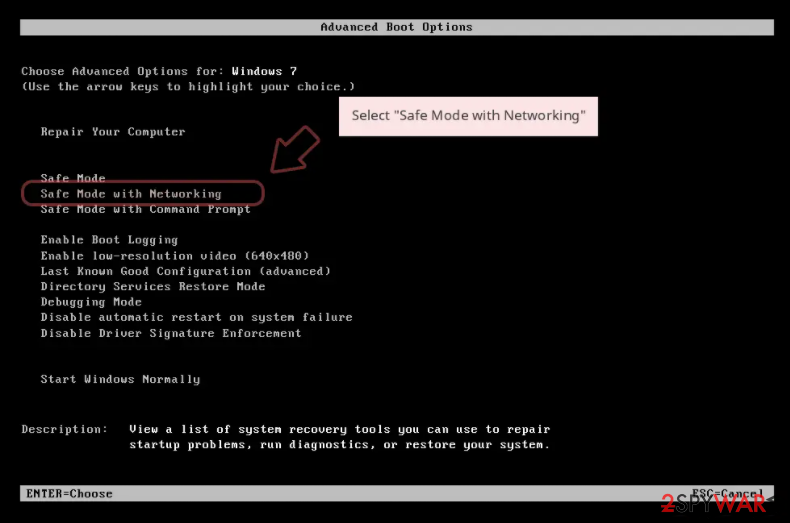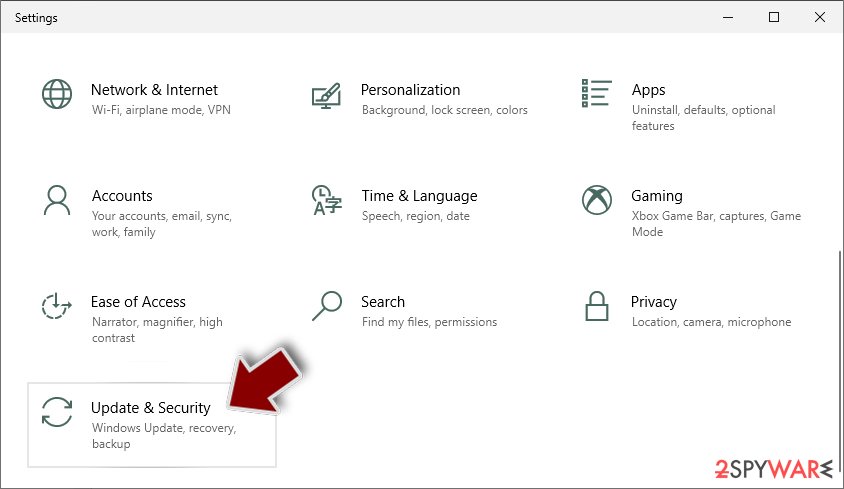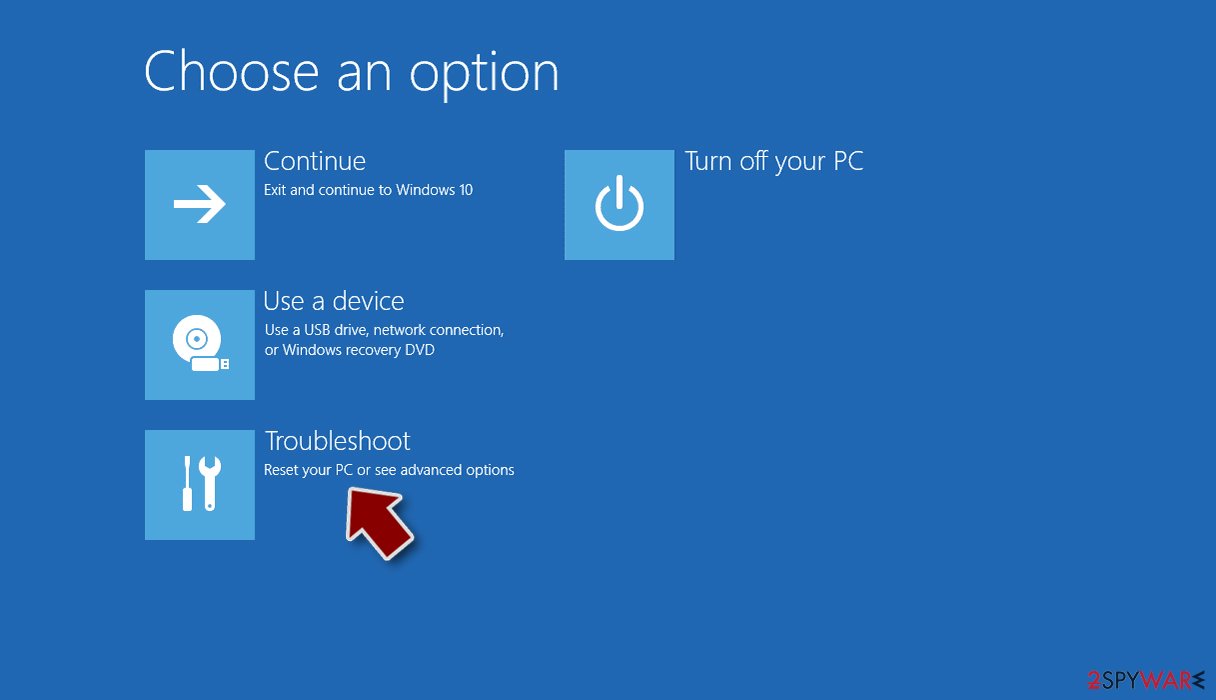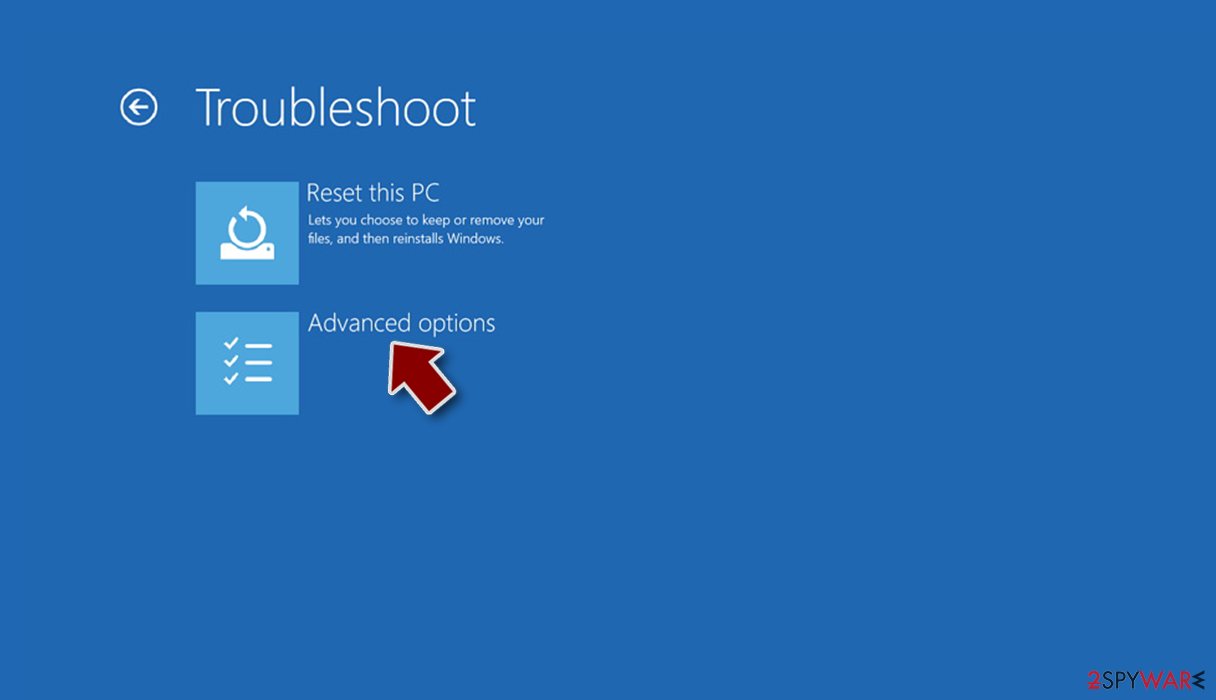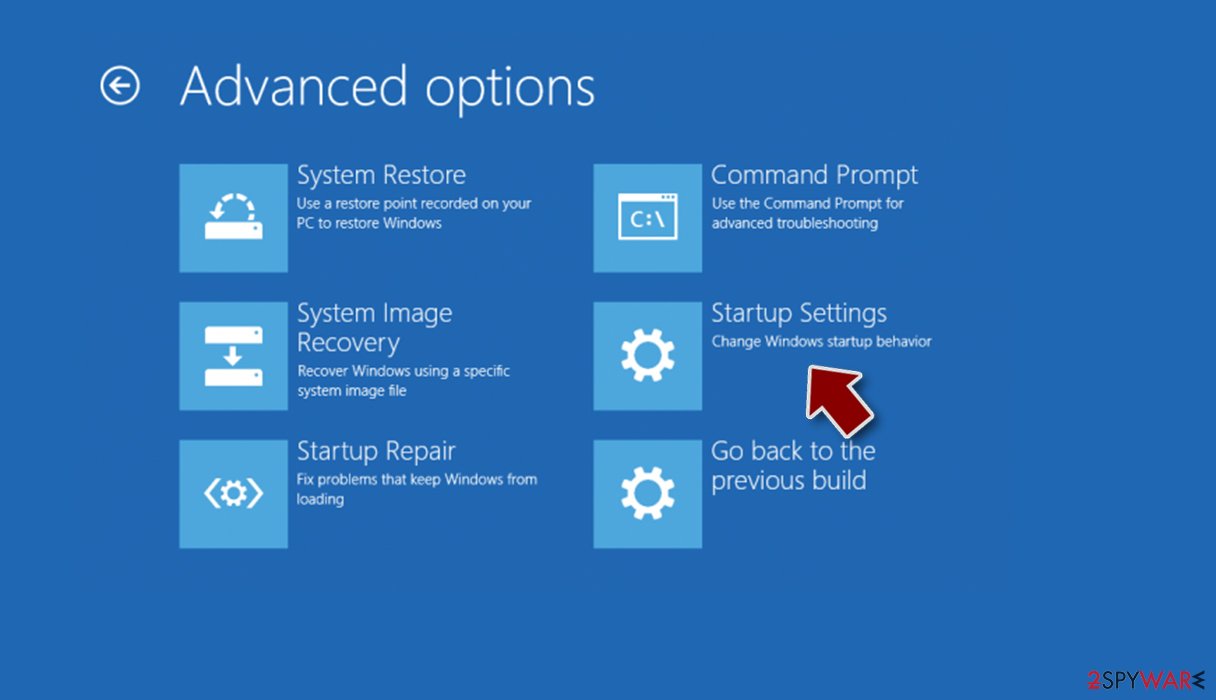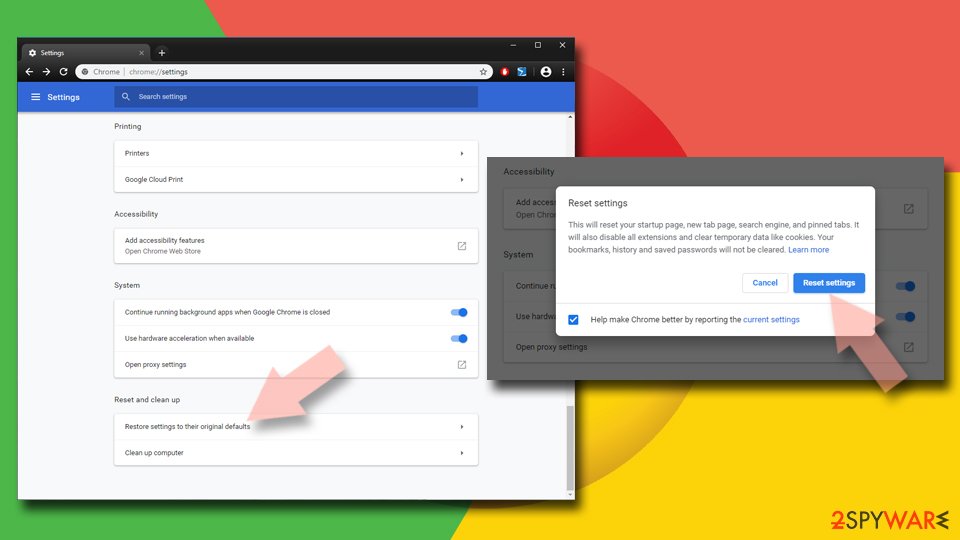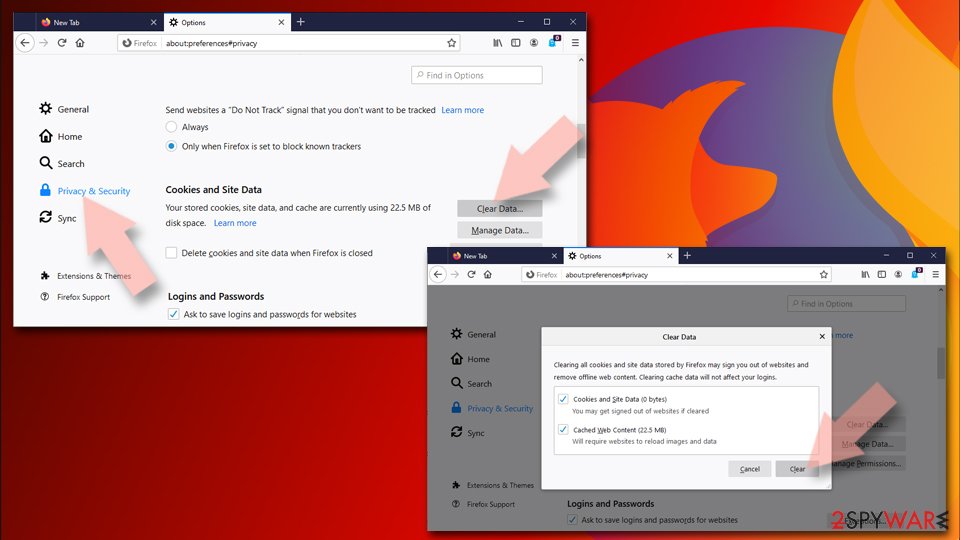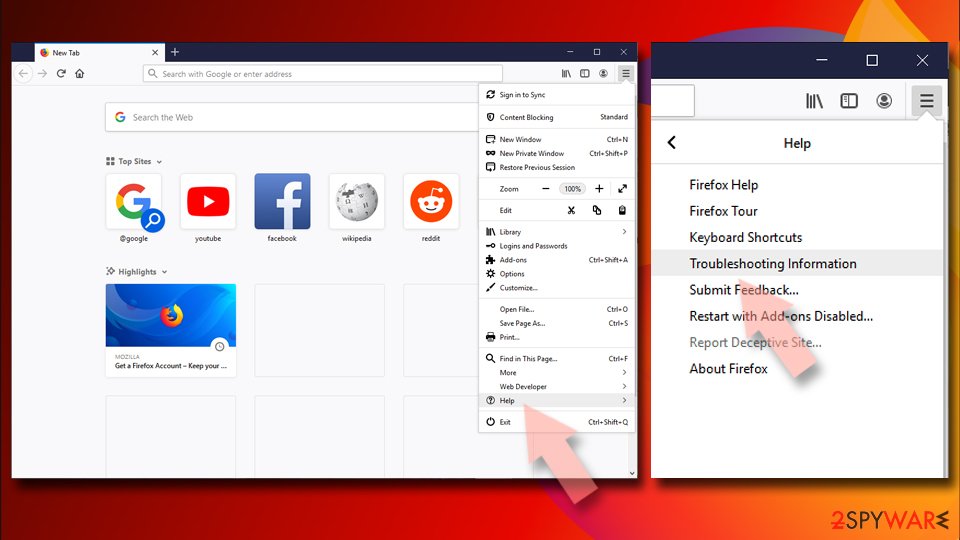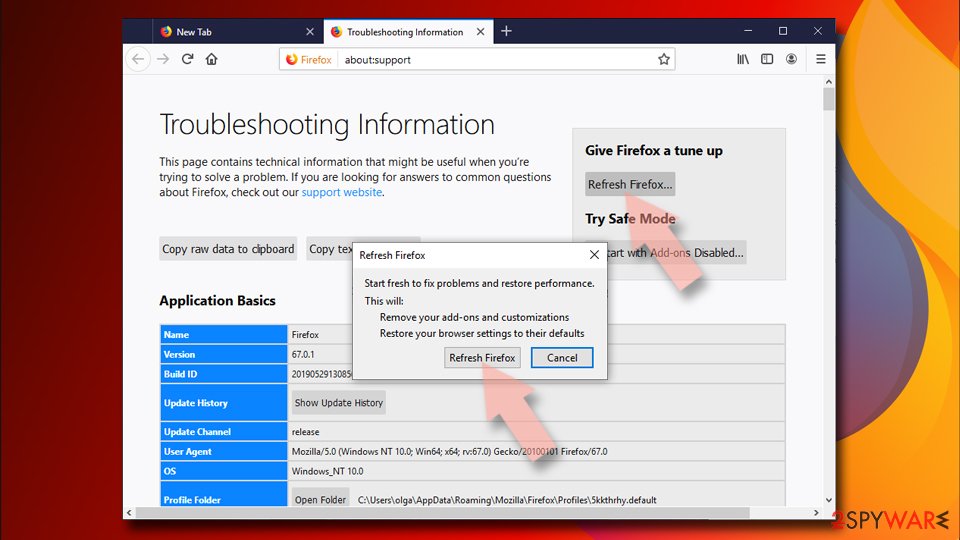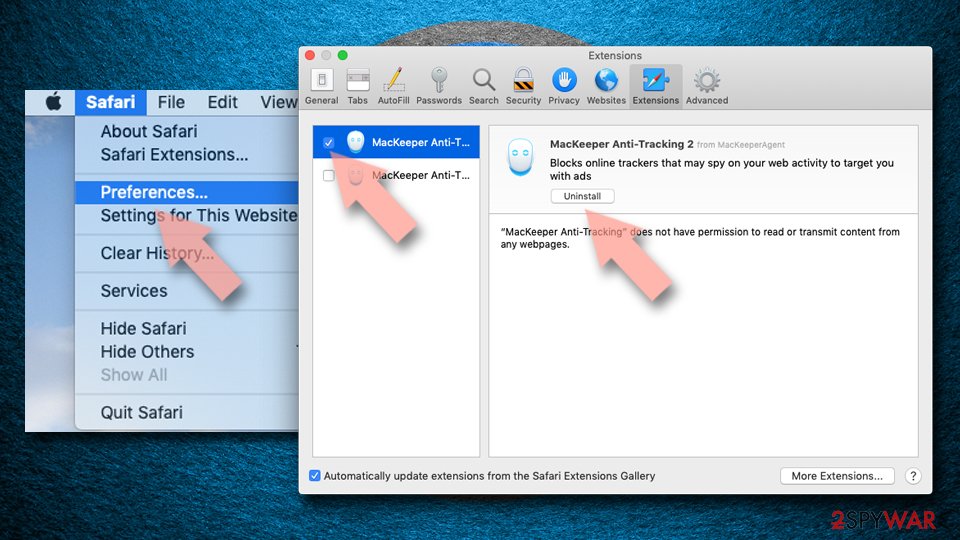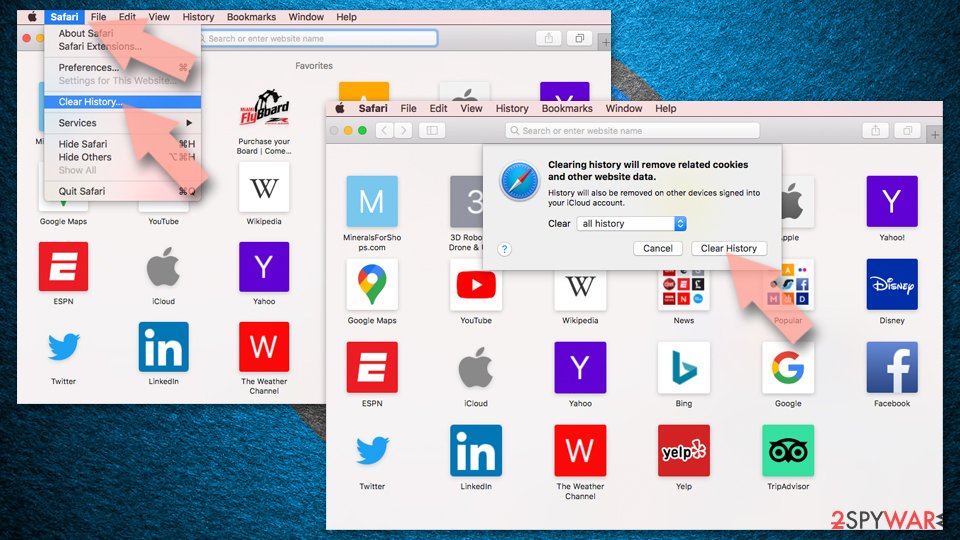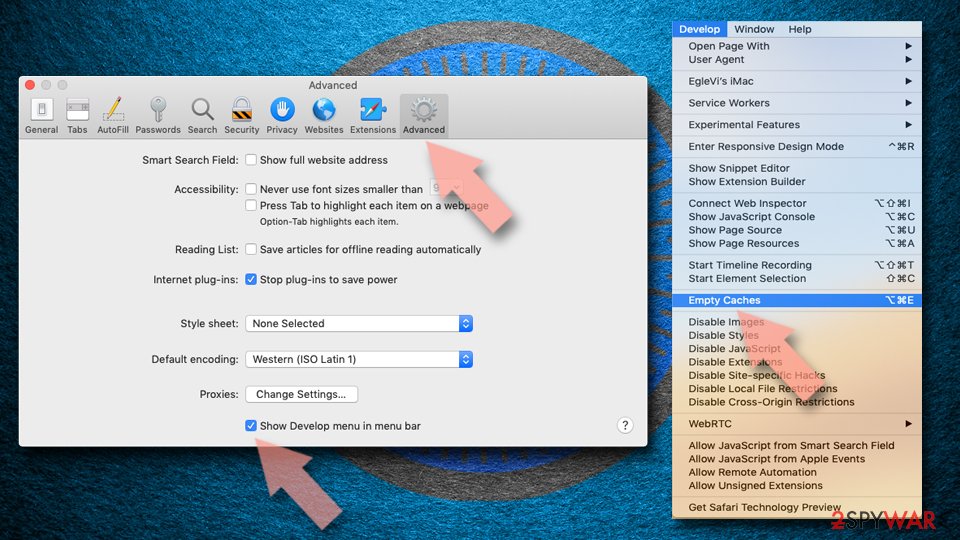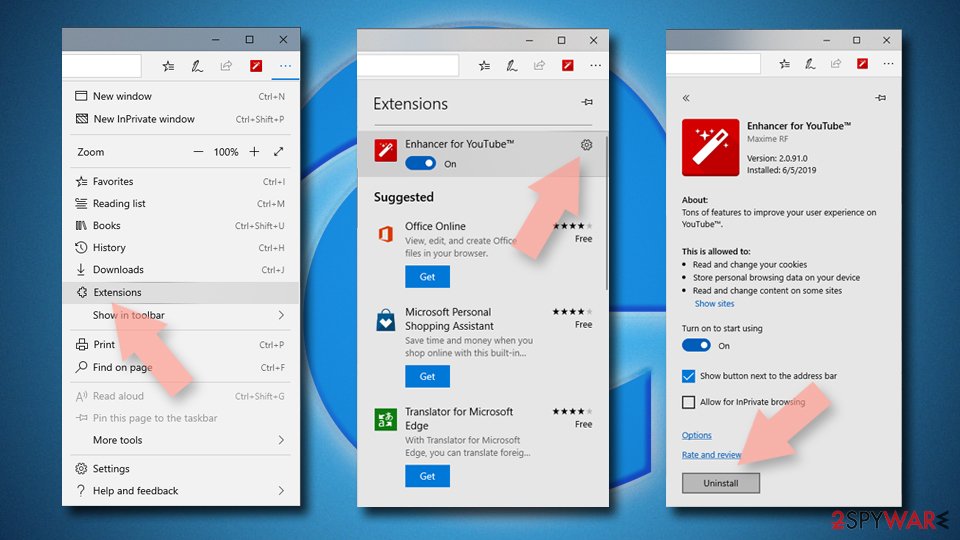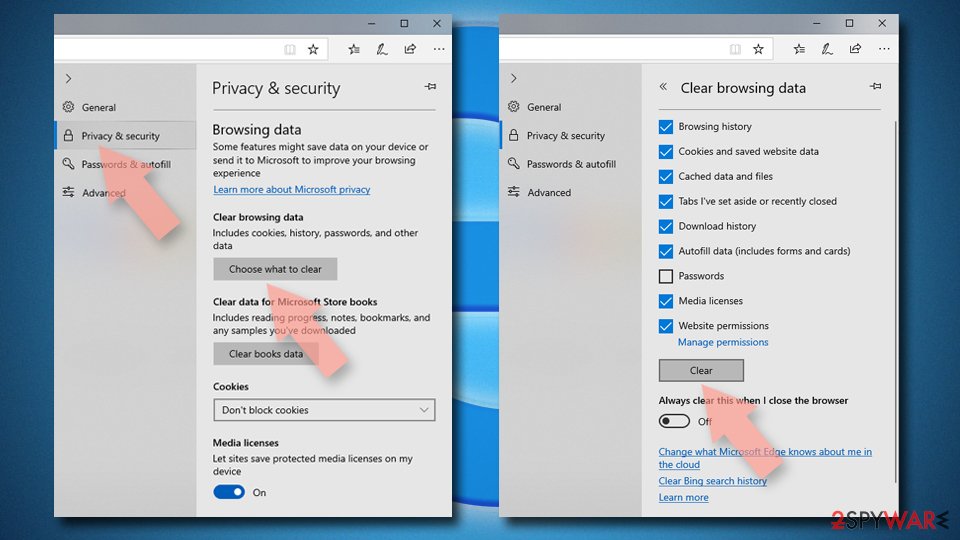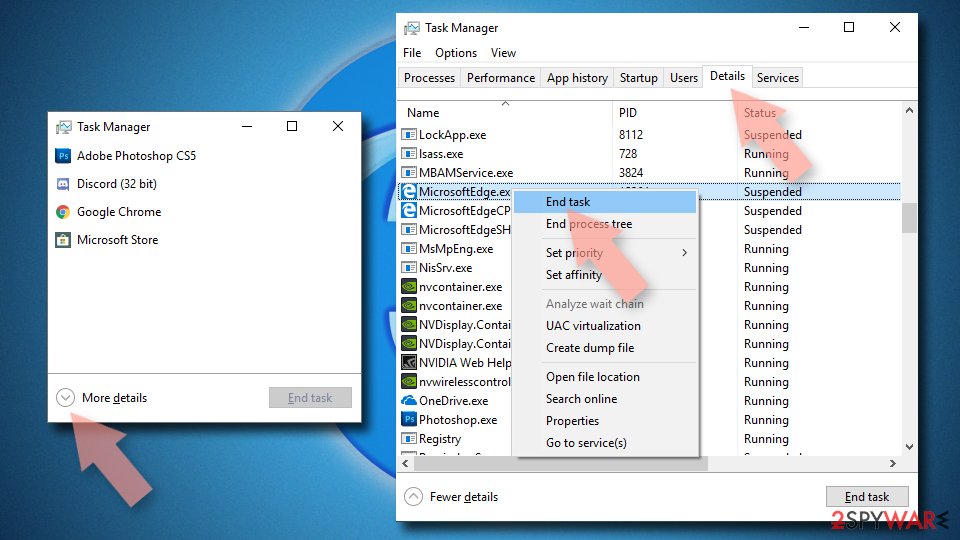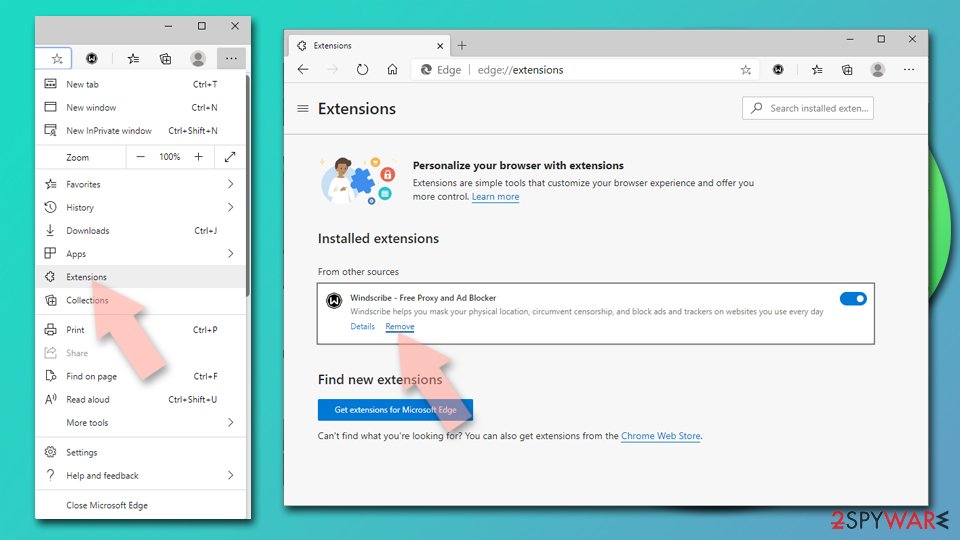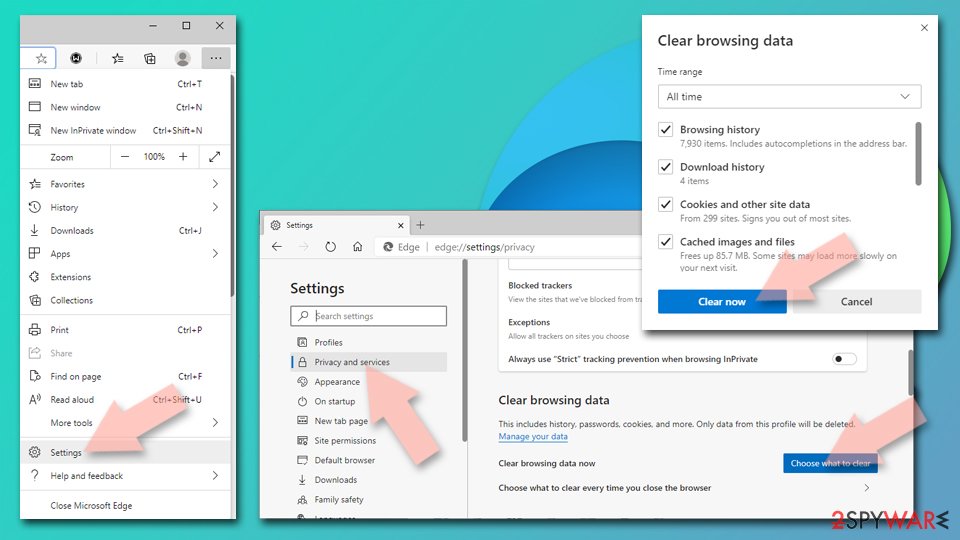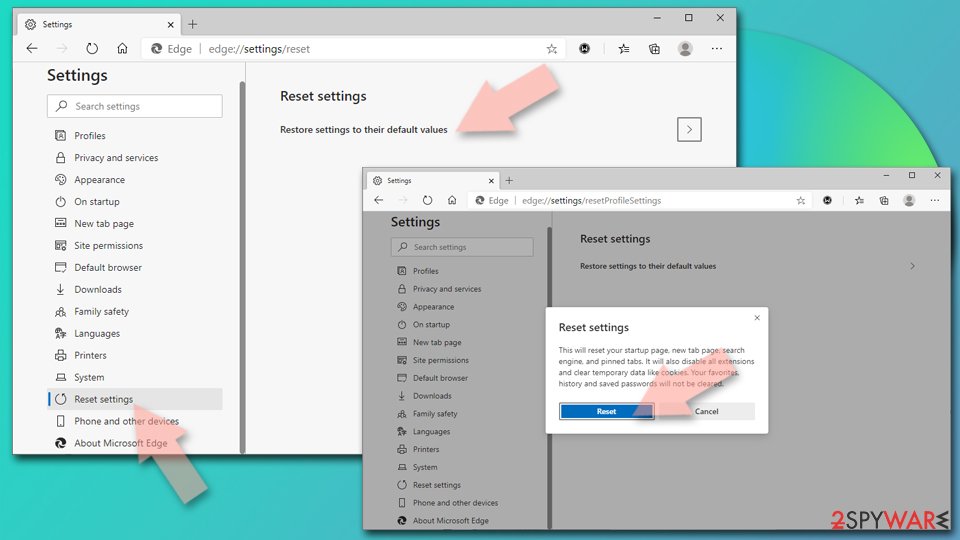Trojan.WIN32.PDF.Alien.gen (virus) - Free Instructions
Trojan.WIN32.PDF.Alien.gen Removal Guide
What is Trojan.WIN32.PDF.Alien.gen?
Trojan.WIN32.PDF.Alien.gen is a malicious program for Windows that might sneak into your PC without warning

PDF.Alien.gen is a Trojan that users might see flagged by their security applications. As evident by the name itself, it spreads via booby-trapped PDF files, typically downloaded as spam email attachments. Likewise, Trojans are also commonly spread via other methods, including illegal software distribution sites.
Trojans are versatile computer infections – it's more of an umbrella term, as the functionality of malware itself can vary greatly. For example, it may steal personal information by recording keystrokes, proliferate other malware, corrupt system files, or simply destroy everything located on a PC. In some cases, malware authors can also use Trojans to completely take over users' machines. While there are Trojans designed for Mac operating systems, most of them are still directed towards Windows and Trojan.WIN32.PDF.Alien.gen is not an exception in this regard.
If you have downloaded a file that was flagged as malicious, you should not ignore the warning and investigate immediately. Never open files that are detected by security software before being completely sure that it is a false-positive.[1] Keep in mind that “gen” within the name represents “generic.” These detections are susceptible to false-positive detections, although this does not happen too often.
| Name | Trojan.WIN32.PDF.Alien.gen |
| Type | Trojan, malware |
| Distribution | Spam emails, malicious websites, torrents, cracks |
| Dangers | Installation of other malware, sensitive information disclosure to cybercriminals, financial losses, identity theft, etc. |
| Removal | Perform a full system scan with powerful security software, such as SpyHunter 5Combo Cleaner |
| System fix | Malware can seriously tamper with Windows systems, causing errors, crashes, lag, and other stability issues after it is terminated. To remediate the OS and avoid its reinstallation, we recommend scanning it with the FortectIntego repair tool |
How do Trojans spread?
A Trojan Horse was named after a technique used by Greeks in the battle of Troy, where soldiers hid within the horse's belly, attacking the enemies unexpectedly. This is exactly the same principle how malware under the same name works – it strikes users unexpectedly, without warning.
In fact, the distribution method is what defines a Trojan. It is presented as a useful or harmless file, which users execute without suspecting anything out of the ordinary. Below are a few scenarios when this happens, and hopefully their overview can help you to avoid malware infections in the future:
- Malicious spam email attachments. Spam emails remain the most popular for malware distribution. Cybercriminals employ bots to send out thousands of obfuscated documents to users every day and present the emails as something legitimate. To avoid being tricked by a fake email, always scan the attachments with anti-malware (or upload files to Virus Total) and never allow macros to be run on your device.
- Software cracks or pirated applications. Another popular method for malware delivery. Cybercriminals are aware that many people are keen on downloading pirated software due to one reason or another. Due to the lack of moderation on torrent and similar sites, it makes it a perfect place for hackers to upload malicious files disguised as something useful. Keep in mind that ransomware such as Nqsq is also spread via illegitimate installers, so you should stay away from these dangerous places in the first place.
- Phishing websites. There are plenty of websites that are created for malicious purposes – be it information theft or malware downloads. Under certain circumstances, a malicious payload can be downloaded and installed automatically without user interaction. This is why it is important to ensure that all the software installed on the machine is up to date. Malware is commonly spread via phishing messages which claim that a virus has been found on the device, and removal software needs to be downloaded. In other cases, users are shown fake update prompts from well-known applications, such as Google Chrome or Flash Player. Never download updates from random websites and instead update the apps in question automatically.

In order to enhance your security, you should always have reputable anti-malware software running in the background. This way, you can be always be warned about the Trojan.WIN32.PDF.Alien.gen virus detection and the infection of the computer can be prevented altogether.
Trojan.WIN32.PDF.Alien.gen removal
Trojans such Emotet, Zbot, or Trickbot have been around for many years and are considered among the most dangerous threats. Thousands of users and corporations fall victims to Trojan attacks every day, and there's little that can be done without adequate security measures and education in the field.
Quite often Trojans and other malware communicate with the remote Command and Control[2] servers via the internet. Crooks can are using them to send various commands, update malware with new modules, proliferate other threats, and much more. Thus, the first step for Trojan.WIN32.PDF.Alien.gen removal should be disconnection of the internet.
You can do that easily by simply pulling out the ethernet cable or right-clicking on the WiFi icon at the bottom-right corner of the taskbar and selecting Disconnect. Once this is done, you can finally proceed with the malware elimination process.
Now you should perform a full system scan with SpyHunter 5Combo Cleaner or another powerful anti-malware software to remove everything malicious from your system automatically. While manual Trojan elimination is possible, it is not recommended for regular computer users, as it requires extensive IT knowledge.
In some cases, malware can interfere with the correct operation of security tools. You can bypass this by accessing the Safe Mode:
Windows 7 / Vista / XP
- Click Start > Shutdown > Restart > OK.
- When your computer becomes active, start pressing the F8 button (if that does not work, try F2, F12, Del, etc. – it all depends on your motherboard model) multiple times until you see the Advanced Boot Options window.
- Select Safe Mode with Networking from the list.
![Windows XP/7 Windows XP/7]()
Windows 10 / Windows 8
- Right-click on the Start button and select Settings.
- Scroll down to pick Update & Security.
![Update & Security Update & Security]()
- On the left side of the window, pick Recovery.
- Now scroll down to find the Advanced Startup section.
- Click Restart now.
![Recovery Recovery]()
- Select Troubleshoot.
![Choose an option Choose an option]()
- Go to Advanced options.
![Advanced options Advanced options]()
- Select Startup Settings.
![Startup settings Startup settings]()
- Click Restart.
- Press 5 or click 5) Enable Safe Mode with Networking.
![Press F5 to enable Safe Mode with Networking Press F5 to enable Safe Mode with Networking]()
Additional security measures
If your device has been infected with a Trojan, there are certain steps you should undertake in order to ensure that all of the malicious components are eliminated fully. If you have used SpyHunter 5Combo Cleaner, Malwarebytes, or another security software to eliminate the infection, you are halfway there.
Depending on the malware payload and what happened to your machine during the infection, the remediation process might differ. However, we strongly recommend you proceed with the following precautionary measures:
- Reset or clean your browsers. You can find more details on how to do that at the bottom of this post;
- Reset all your passwords and use two-factor authentication where available;
- Repair damaged system components with FortectIntego, or you might start facing crashes, errors, BSODs,[3] and other issues after malware is removed.
Keep in mind that malware is luring on the internet, so you should always be careful when using it. Use antivirus software at all times, employ ad-blockers to block malicious ads, and be more careful overall.
Getting rid of Trojan.WIN32.PDF.Alien.gen. Follow these steps
Remove from Google Chrome
Delete malicious extensions from Google Chrome:
- Open Google Chrome, click on the Menu (three vertical dots at the top-right corner) and select More tools > Extensions.
- In the newly opened window, you will see all the installed extensions. Uninstall all the suspicious plugins that might be related to the unwanted program by clicking Remove.

Clear cache and web data from Chrome:
- Click on Menu and pick Settings.
- Under Privacy and security, select Clear browsing data.
- Select Browsing history, Cookies and other site data, as well as Cached images and files.
- Click Clear data.

Change your homepage:
- Click menu and choose Settings.
- Look for a suspicious site in the On startup section.
- Click on Open a specific or set of pages and click on three dots to find the Remove option.
Reset Google Chrome:
If the previous methods did not help you, reset Google Chrome to eliminate all the unwanted components:
- Click on Menu and select Settings.
- In the Settings, scroll down and click Advanced.
- Scroll down and locate Reset and clean up section.
- Now click Restore settings to their original defaults.
- Confirm with Reset settings.

Remove from Mozilla Firefox (FF)
Remove dangerous extensions:
- Open Mozilla Firefox browser and click on the Menu (three horizontal lines at the top-right of the window).
- Select Add-ons.
- In here, select unwanted plugin and click Remove.

Reset the homepage:
- Click three horizontal lines at the top right corner to open the menu.
- Choose Options.
- Under Home options, enter your preferred site that will open every time you newly open the Mozilla Firefox.
Clear cookies and site data:
- Click Menu and pick Settings.
- Go to Privacy & Security section.
- Scroll down to locate Cookies and Site Data.
- Click on Clear Data…
- Select Cookies and Site Data, as well as Cached Web Content and press Clear.

Reset Mozilla Firefox
If clearing the browser as explained above did not help, reset Mozilla Firefox:
- Open Mozilla Firefox browser and click the Menu.
- Go to Help and then choose Troubleshooting Information.

- Under Give Firefox a tune up section, click on Refresh Firefox…
- Once the pop-up shows up, confirm the action by pressing on Refresh Firefox.

Delete from Safari
Remove unwanted extensions from Safari:
- Click Safari > Preferences…
- In the new window, pick Extensions.
- Select the unwanted extension and select Uninstall.

Clear cookies and other website data from Safari:
- Click Safari > Clear History…
- From the drop-down menu under Clear, pick all history.
- Confirm with Clear History.

Reset Safari if the above-mentioned steps did not help you:
- Click Safari > Preferences…
- Go to Advanced tab.
- Tick the Show Develop menu in menu bar.
- From the menu bar, click Develop, and then select Empty Caches.

Remove from Microsoft Edge
Delete unwanted extensions from MS Edge:
- Select Menu (three horizontal dots at the top-right of the browser window) and pick Extensions.
- From the list, pick the extension and click on the Gear icon.
- Click on Uninstall at the bottom.

Clear cookies and other browser data:
- Click on the Menu (three horizontal dots at the top-right of the browser window) and select Privacy & security.
- Under Clear browsing data, pick Choose what to clear.
- Select everything (apart from passwords, although you might want to include Media licenses as well, if applicable) and click on Clear.

Restore new tab and homepage settings:
- Click the menu icon and choose Settings.
- Then find On startup section.
- Click Disable if you found any suspicious domain.
Reset MS Edge if the above steps did not work:
- Press on Ctrl + Shift + Esc to open Task Manager.
- Click on More details arrow at the bottom of the window.
- Select Details tab.
- Now scroll down and locate every entry with Microsoft Edge name in it. Right-click on each of them and select End Task to stop MS Edge from running.

If this solution failed to help you, you need to use an advanced Edge reset method. Note that you need to backup your data before proceeding.
- Find the following folder on your computer: C:\\Users\\%username%\\AppData\\Local\\Packages\\Microsoft.MicrosoftEdge_8wekyb3d8bbwe.
- Press Ctrl + A on your keyboard to select all folders.
- Right-click on them and pick Delete

- Now right-click on the Start button and pick Windows PowerShell (Admin).
- When the new window opens, copy and paste the following command, and then press Enter:
Get-AppXPackage -AllUsers -Name Microsoft.MicrosoftEdge | Foreach {Add-AppxPackage -DisableDevelopmentMode -Register “$($_.InstallLocation)\\AppXManifest.xml” -Verbose

Instructions for Chromium-based Edge
Delete extensions from MS Edge (Chromium):
- Open Edge and click select Settings > Extensions.
- Delete unwanted extensions by clicking Remove.

Clear cache and site data:
- Click on Menu and go to Settings.
- Select Privacy, search and services.
- Under Clear browsing data, pick Choose what to clear.
- Under Time range, pick All time.
- Select Clear now.

Reset Chromium-based MS Edge:
- Click on Menu and select Settings.
- On the left side, pick Reset settings.
- Select Restore settings to their default values.
- Confirm with Reset.

How to prevent from getting trojans
Protect your privacy – employ a VPN
There are several ways how to make your online time more private – you can access an incognito tab. However, there is no secret that even in this mode, you are tracked for advertising purposes. There is a way to add an extra layer of protection and create a completely anonymous web browsing practice with the help of Private Internet Access VPN. This software reroutes traffic through different servers, thus leaving your IP address and geolocation in disguise. Besides, it is based on a strict no-log policy, meaning that no data will be recorded, leaked, and available for both first and third parties. The combination of a secure web browser and Private Internet Access VPN will let you browse the Internet without a feeling of being spied or targeted by criminals.
No backups? No problem. Use a data recovery tool
If you wonder how data loss can occur, you should not look any further for answers – human errors, malware attacks, hardware failures, power cuts, natural disasters, or even simple negligence. In some cases, lost files are extremely important, and many straight out panic when such an unfortunate course of events happen. Due to this, you should always ensure that you prepare proper data backups on a regular basis.
If you were caught by surprise and did not have any backups to restore your files from, not everything is lost. Data Recovery Pro is one of the leading file recovery solutions you can find on the market – it is likely to restore even lost emails or data located on an external device.
- ^ Pieter Arntz. Explained: False positives. Malwarebytes. Security blog.
- ^ Command and Control Explained. Paloalto. Security blog.
- ^ Blue screen of death. Wikipedia. The free encyclopedia.
